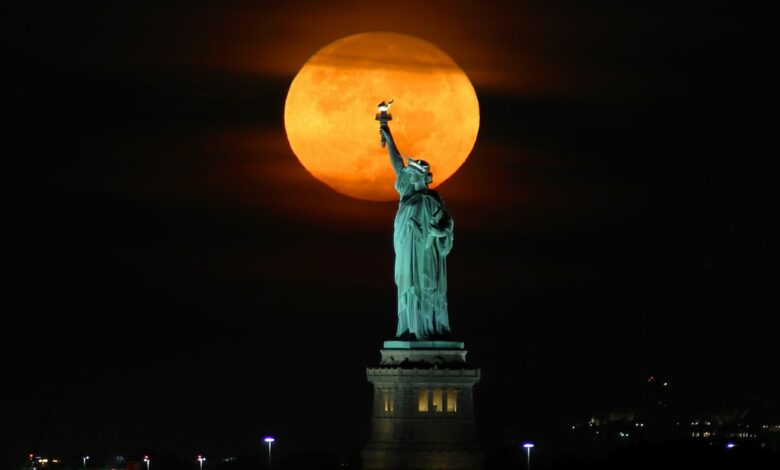
CNN — If you need a sign other than pumpkin spice lattes that fall is in the air, look no further than the harvest moon.
Stargazers can view the moon beginning around sunset on Friday, and it will peak at 5:59 a.m. ET Saturday, according to NASA.
This lunar event is called the harvest moon because it is close to the fall equinox, a time when farmers often harvest their crops, NASA said.
In 2022, September’s full moon is closest to the autumnal equinox, which falls on September 22, so it’s called the harvest moon, according to The Old Farmer’s Almanac. When October’s full moon is closer to the equinox, it gets the name harvest moon, and September’s is called the corn moon.
The harvest moon first emerges around sunset on Friday and rises 25 minutes later each day in the northern United States and 10 to 20 minutes later in Canada and Europe, according to The Old Farmer’s Almanac. Once the moon moves into its next phase, it returns to its normal schedule of rising 50 minutes later each day.
Other full moons during the year remain on that 50-minute timeline, according to EarthSky.
The earlier rising time of the harvest moon happens in the Northern Hemisphere near the autumnal equinox when the moon’s orbit is closest with the Eastern horizon, The Old Farmer’s Almanac said. The moon’s orbit moves about 12 degrees to the east each day, but because September’s full moon is so close to the horizon, it rises sooner than usual, according to the almanac.
Moonlight lasts from dawn to dusk for a few nights in a row, which gives farmers light to continue working at night, EarthSky said.
In the Southern Hemisphere, this effect occurs around the spring equinox in either March or April, according to EarthSky.
When the moon begins its ascent into the sky, it may look a burnt orange hue. This is because there is a thicker layer of the Earth’s atmosphere along the horizon compared with directly above our heads, according to EarthSky.
That atmosphere acts as a filter, transforming the moon into the eerie color when it first emerges above the horizon.
The harvest moon may also appear larger in the sky compared with other full moons, but your eyes are playing a trick on you.
Any full moon will look bigger along the horizon, so the harvest moon’s location close to the skyline makes this optical illusion more noticeable, EarthSky said.
Remaining events in 2022
Three more full moons will occur this year, according to The Old Farmer’s Almanac:
• October 9: Hunter’s moon
• November 8: Beaver moon
• December 7: Cold moon
Native American tribes have different names for the full moons, such as the Cheyenne tribe’s “drying grass moon” for the one happening in September, and the Arapaho tribe’s “popping trees” for the full moon occurring in December.
Catch the peak of these upcoming meteor shower events later this year, according to EarthSky’s 2022 meteor shower guide:
• Draconids: October 8-9
• Orionids: October 20-21
• South Taurids: November 5
• North Taurids: November 12
• Leonids: November 17-18
• Geminids: December 13-14
• Ursids: December 22-23
And there will be one more total lunar eclipse and a partial solar eclipse in 2022, according to The Old Farmer’s Almanac. The partial solar eclipse on October 25 will be visible to people in parts of Greenland, Iceland, most of Europe, northeast Africa, and western and central Asia.
The total lunar eclipse on November 8 can be seen in Asia, Australia, the Pacific, South America and North America between 3:02 and 8:56 a.m. ET. But for people in eastern North America, the moon will be setting during that time.
Wear proper eclipse glasses to view solar eclipses safely as the sun’s light can damage the eyes.




